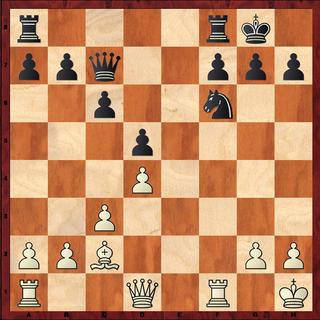White to Play
Published in Chess Puzzles

In this, our eighth week of chess summer school, we are going to take excerpts from a great new book by popular chess teacher Dan Heisman. His book, “Is Your Move Safe?”, successfully teaches the average chess player how to think about deciding what move to play. He has a real chess teacher’s insight to what goes wrong and comes up with great examples. Chess games at beginners and intermediate levels are usually lost through sloppy tactical thinking. Heisman’s book goes a long way in improving that situation. Our first example from his book makes an important point: if you have an attack, make sure you deal with your opponent’s possible defenses. In the book, he has you decide if the following are safe for White to Play here: 1.a3; 1.Qd3; 1.Rxf6. Then he points out where you can go wrong. So, your task here is to write down the moves that are safe and then write down which is best and the moves you would play.
Solution: Heisman spends important time on each of the three moves. While 1.a3 is safe, he points out that it accepts being a pawn down. 1.Qd3, threatening mate, is also safe, but it, too, accepts material loss. 1.Rxf6 actually wins, but it was the little twist he put in that resonated with me, because I have seen this happen in so many average player games it’s enough to make you scream. And, when it happens in a game of mine, well, you can imagine my reaction…In this position, I can see players going with the 2.Qd3 move below because they don’t think about their opponent actually playing defense! Here’s the solution 1.Rxf6 gxf6 2.Qg4+ [How many would just carelessly play 2.Qd3 just to meet up with 2…f5 3.Qxf5 f6 and White is lost!] 2...Kh8 3.Qf5 and mate is unstoppable We’ll do more from this interesting approach in the coming days.
Send questions and comments to PTamburro@aol.com.







Comments